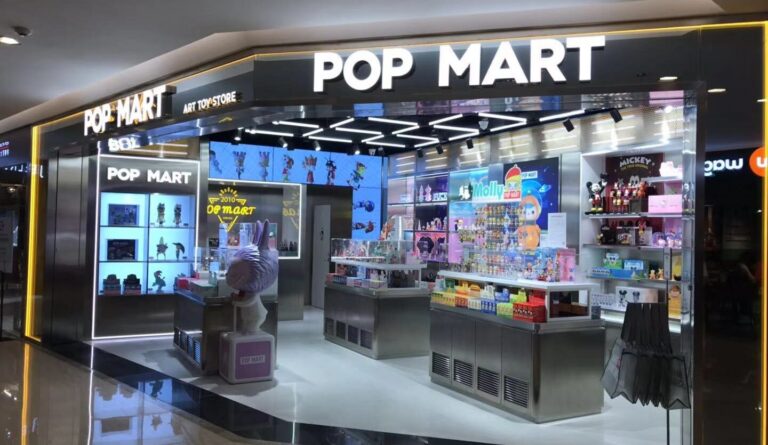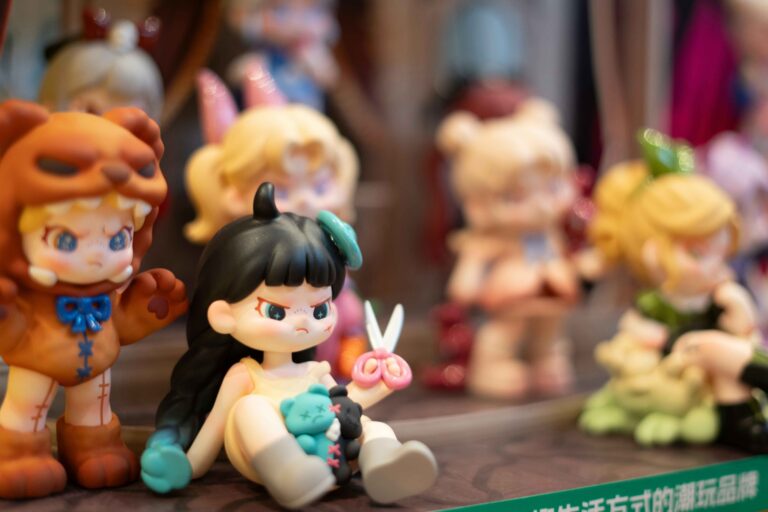With almost 300 million kids under the age of 18 in 2023, the Chinese toy and games market is extremely profitable. It is expected to reach a revenue of more than USD 19.1 billion in 2025. Lego is among the major players in this sector, holding over 43% of the market share in the construction toy category as of 2021. Due to its marketing strategy and its ability to perfectly blend with the local cultural background, Lego is gaining lots of success in China, recording a 17% growth in revenue in 2022, reaching USD 3.5 billion. Lego is continuing to invest in building brick-and-mortar retail stores nationwide, with plans to open 145 new stores around the world, most of which would be in China.
Download our report on the She Economy in China

From zero to hero: the history of Lego in China
The history of Lego (乐高) in China begins in 1993 when the Danish company opened its first store in Beijing. At that time, keeping a stable price over time was an extremely difficult challenge because the government imposed heavy taxes on every imported toy. Lego was considered a luxury item during that period, especially because of the sudden variations in the products’ retail prices. Back then, intellectual property rights didn’t exist in China. Therefore, many industries tried to copycat the company’s products and sell them at lower prices. Lego survived this ruthless competition and, in 2021, became one of the biggest toy producers in the country and in the world.
Huge investments show Lego’s long-term commitment to the Chinese market
Lego’s success in China can be largely attributed to the company’s significant investments in the country, particularly in opening new stores. In 2021 alone, out of 165 Lego stores opened across the globe, 90 were situated in China. This trend has continued in 2022, with 46 new store openings in the first six months of the year. The Danish company has also targeted lower-tier cities, which represent a significant portion of the Chinese consumer base. In fact, out of all the stores owned by Lego in China, around 40% are located in 2nd and 3rd-tier cities. Lego’s expansion policy continues to this day. As of 2023, the company has more than 480 retail stores across China.
Legoland Shanghai: Lego’s foray into China’s theme park market
Legoland Shanghai officially opened in Jinshan District on 5th July 2025. It is the world’s largest Legoland and the first in China. It targets families with children aged two to twelve years old and also adult fans, with certain rides or activities designed to encourage parent-child cooperation. The park features eight themed zones, 75 rides and attractions, and thousands of LEGO models made from over 85 million bricks.
The park employs a six-tier pricing system ranging from RMB 255 to 599, making it Asia’s most expensive Legoland. Due to the high prices coupled with extreme weather disruptions, the opening was subdued compared to Disney’s launch in 2016. There were no major ticket scalping seen and steady ticket availability on ticketing platforms. Manual social listening on RedNote revealed several issues. The park is located 70 km from central Shanghai, making it hard to reach. Limited public transport also adds to the problem. Moreover, operational issues also affect interest, including long wait times and unopened rides.
Nevertheless, Legoland’s investment in China reflects its confidence in the long-term potential of the domestic family tourism market. Its localization strategies include creating Chinese-themed LEGO sets and incorporating Chinese elements in most of its parks. It features miniature landmarks such as Potala Palace and Yellow Crane Tower for their Chinese cultural elements.
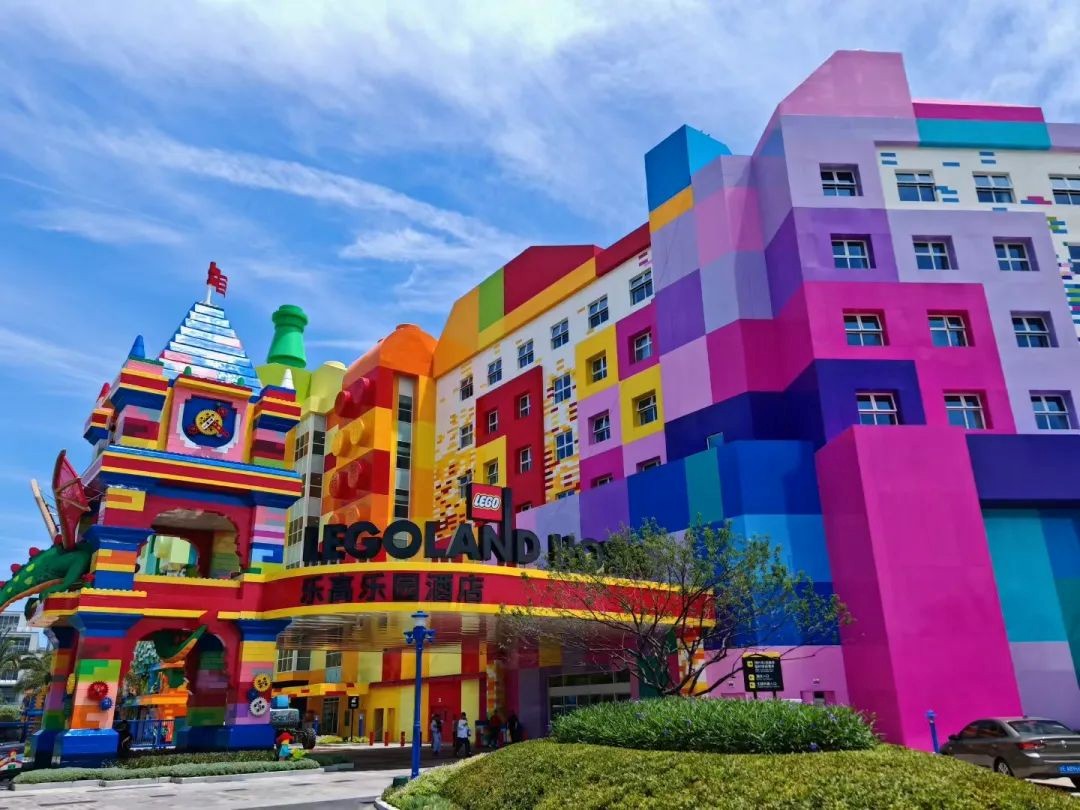
Lego’s marketing strategy in China shifts to e-commerce and sustainability
For the past few years, Lego has been focusing on digitalizing every aspect of its business in China. After the pandemic, Lego has started a new phase of its digital transformation, aiming to improve customer experience by collaborating with the biggest digital platforms, as well as investing for upgrading their products. To engage more with its customers, Lego began to develop its omni-channel retail ecosystem, as well as to sign partnerships with e-commerce platforms.
In 2020, the Danish company first renewed its strategic partnership with the tech giant Tencent: the two parties showed commitment to enhancing the digital play experience and child safety while playing online video games. Lego also invested in creating more eco-friendly set pieces. In 2021, the company revealed a prototype brick created by using recycled PET bottles and announced its goal to reduce reliance on non-renewable materials. Additionally, the company committed to achieving 100% sustainable packaging by 2025.
Lego is enhancing brand awareness in China
One of the most important events for Lego over the last years was its participation in the China International Import Expo (CIIE). The Expo represents the perfect opportunity for foreign companies to find local partners and stakeholders. In 2022, Lego celebrated its 90th anniversary since its foundation with the initiative “90 years of play”. Moreover, to underline how much families and children mean to the company, Lego built a 78,700-brick playground on its CIIE pavilion. They also did not forget to celebrate the Chinese culture and traditions, and released five Lego sets representing Chinese festivities and symbols, such as the “Chinese Lunar New Year Display”, the “Lunar New Year Parade”, and the “Money Tree”. The Danish company is not new to this Expo, as it was its 5th consecutive year of participation. During the 2021 CIIE, Lego released seven new sets, three of which were inspired by Chinese culture.
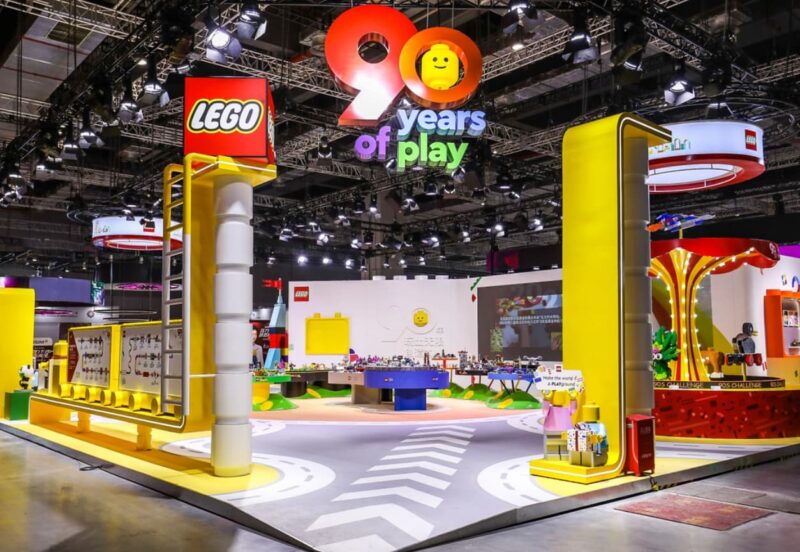
Lego aims to build a better future for the next generations
While the 5th Shanghai CIIE was taking place, Lego also announced a strategic partnership with the China Development Research Foundation called “prescription for play”. The program consists of supporting the development of parental behaviors by helping children learn how to play at home. The Covid-19 pandemic heavily affected the vision of Lego’s marketing strategy in China, which is now also focusing on building safe spaces for children and their families. Apart from distributing playing materials and bricks to local healthcare centers, the initiative will provide in-depth instructions for an improved and healthier parent-child relationship.
In 2021, Lego continued its tradition of collaborations at the Shanghai Expo by partnering with the Shanghai Chenshan Botanical Garden to involve more children in sustainability. The project provided children with the opportunity to share their ideas on what a sustainable future would look like. For the event, the company also built an installation consisting of a 2.5-ton installation called the “garden of creativity”.
Exploring Lego’s initiatives in China: sustainability, creativity, and innovation
Between the end of 2022 and the beginning of 2023, Lego launched two big events on Weibo, the famous Twitter-like Chinese platform. In September 2022, the company launched the campaign “Small World Creates Big Ideas”. The initiative was an immersive experience aimed at encouraging children to create a better and more colorful world. The campaign was launched along with a video of some children using their creativity to build every sort of Lego construction in the real world. The marketing campaign aimed to demonstrate how adding Lego bricks can transform the appearance of buildings such as houses, schools, and benches in Shanghai. This project proved to be a successful strategy for Lego. As of 2023, the official hashtag of the campaign (#小世界造出大创想#) has garnered more than 1 million views on Weibo.
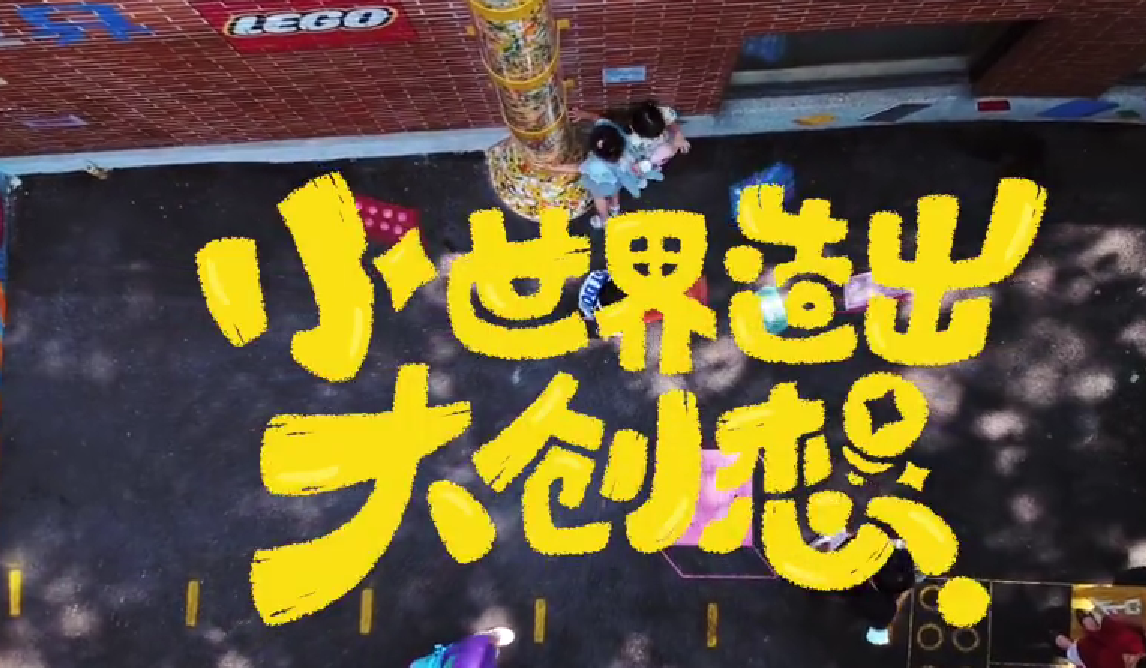
LLego also tapped into the realm of STEM education and car enthusiasts. An exhibition took place in Shanghai and attracted waves of Lego and supercar enthusiasts. The show not only hosted more than 30 vehicles, including 8 new Lego products, but it also collected the works created by Lego fans. The project was designed for children too, inviting them to create their own race cars in the Lego’s workshop. The Weibo hashtags launched by the Danish company have collected tons of views in just a few days. The hashtag “Lego Technic” (#乐高机械组#) reached almost 14 million views, while “Supercar Real Player” (#超跑真玩家#), the official hashtag of the initiative, gained more than 1.9 million views.
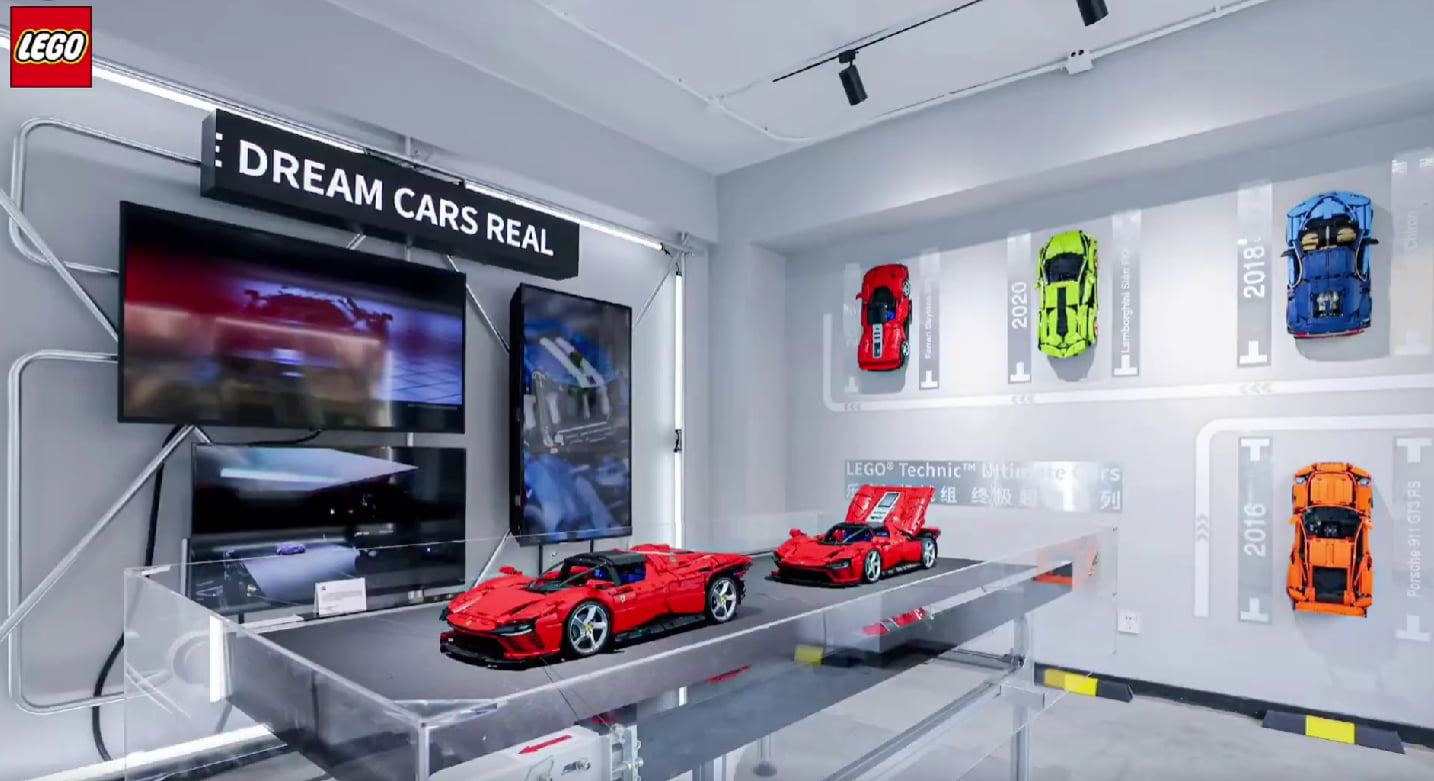
Lego’s expansion and marketing strategies in China
- Lego has a significant presence in China’s toy market, holding 43% of the construction toy market share in the country.
- The company has invested heavily in China, particularly in offline retail stores. As of 2023, the company already has 380 stores spread across China.
- Lego targets Chinese families as its primary consumer base, and it is building 3 huge Legoland resorts, which are due to open between 2023 and 2024.
- After the pandemic, Lego has started a new digitalization process focused more on improving the e-commerce retail system and the sustainability of its products.
- The Shanghai CIIE represents an annual opportunity for Lego to show its new products and engage more with its consumers. During the 4th and the 5th editions of the Expo, the company also celebrated the Chinese culture and tradition by releasing Chinese-New-Year-themed Lego sets.
- During the 2021 and 2022 CIIE, Lego signed strategic partnerships with the China Development Research Foundation and with the Shanghai Chenshan Botanical Garden to create a safer play environment for children and introduce them to the concepts of sustainability.
- Lego’s marketing strategy in China does not end here. Recently, Lego launched two huge campaigns on Weibo aimed at increasing its brand awareness. Both projects had the objective of stimulating children’s creativity, the first one through improving already-existing buildings with Lego bricks, and the other with “Do It Yourself” Lego supercars.
Read about MNC-startup innovation in China




